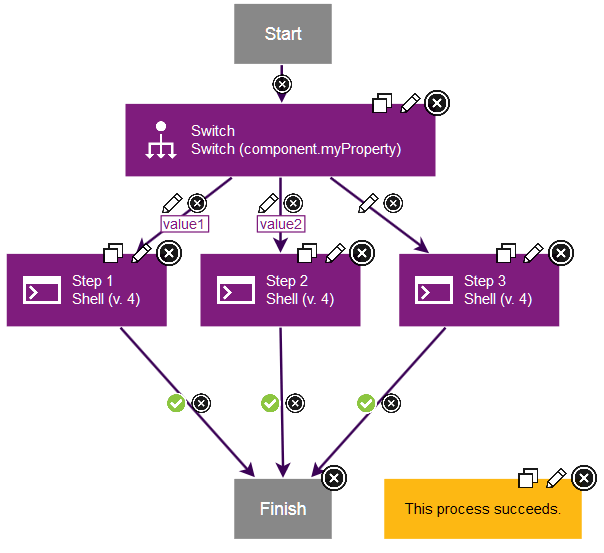You can branch processes so that multiple steps run at
the same time. You can also merge processes to return to running a
single step at a time.
Default branching and joining
To branch
a process and run multiple steps at the same time, add multiple outgoing
connections from a step. You can use any combination of
success,
fail,
and
both conditional flags, as described in
Conditional processes. For example, the following
process shows a step that branches into four steps. Two connections
have
success flags. One has a
fail flag,
and one has a
both flag.
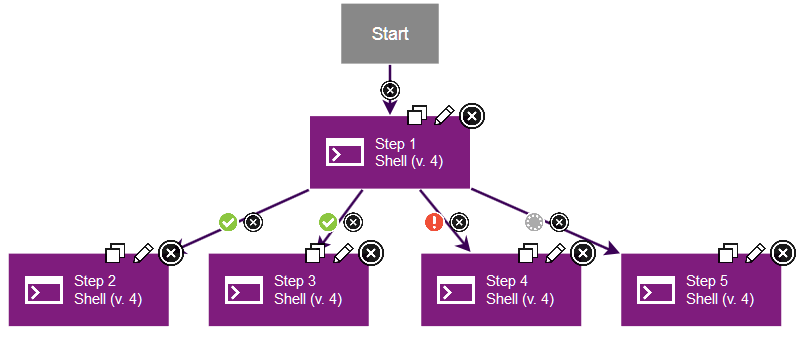
In this case, if the first step finishes, three steps run at the same time: the connections with
the success flags and the connection with the both flag. If the
first step fails, two steps run at the same time: the connection with the fail flag
and the connection with the both flag.
If
a process has multiple steps that run at the same time, you can use
connections to merge the process into a single step. For example,
the following process shows two steps that are running at the same
time. Both steps have a connection to a third step, and both of those
connections have a
success conditional flag. In this
case, if either step 2 or step 3 fails, step 4 does not run. Because
all the parallel processes that branch from step 1 have
success flags,
all the processes that merge at step 4 must succeed for step 4 to
run.
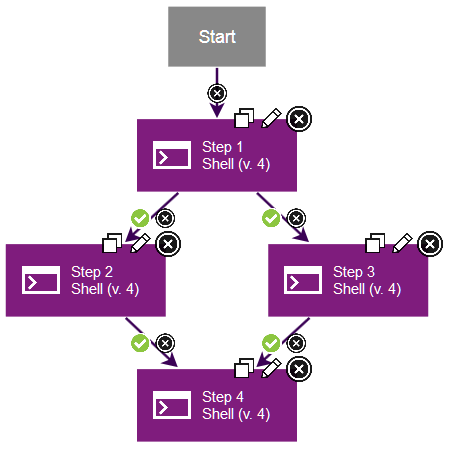
How you branch and merge steps can change whether the process finishes or fails. For example,
the following process has three steps. Step 1 runs on its own parallel path. In another parallel
path, step 2 runs first and then links to step 3. Step 1 and step 3 then connect to the Finish step.
If step 2 fails, step 3 does not run. Because step 2 failed, the entire branch is invalid, and the
process fails.
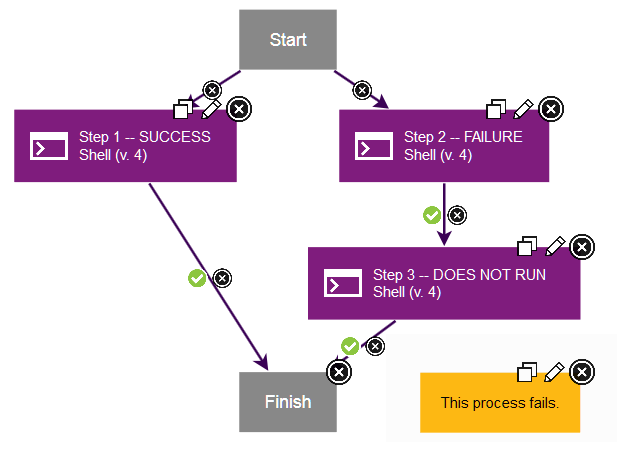
If you assign a
success flag
to one parallel process and a
failure flag to another
parallel process, only one parallel process can run. Because only
one parallel process can run, only one of the processes that merge
at the merging step must succeed for that step to run. In the following
example, if step A succeeds, step B runs. If step A fails, step C
runs. Step D runs if either step B or C succeeds.
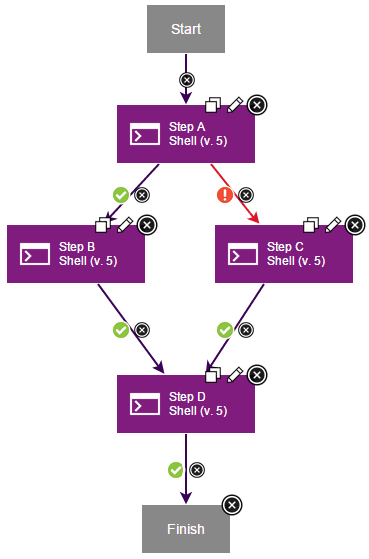
Your process can include nested parallel paths, but you must carefully plan how the parallel
paths merge. The rules for the success and failure flags that you
assign at the branching step control how the parallel paths must merge. If you mark all the steps at
the branching step with success flags, then all the steps that are attached to the
merging step must succeed.
The
following process contains two branching steps but only one merging
step. Because both branches from step A have
success flags,
all the steps that merge at step D must succeed for it to run. Step
P runs only if step C succeeds and step Q runs only if step C fails.
Because both step P and step Q merge at step D, it is impossible for
all the steps that join at step D to succeed. This process always
fails.
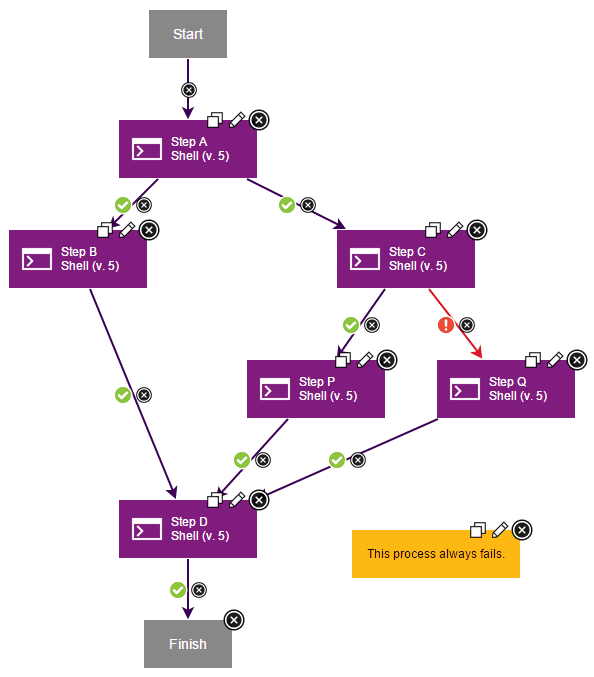
The
following process adds a separate merging step to resolve the parallel
paths that branch at step C. As in the previous example, either step
P or step Q runs. Unlike the previous example, steps P and Q merge
at step R, which follows the rules for its branching step and runs
if either step P or Q succeeds. Step D still follows the branching
rules for step A and runs only if all the processes that it merges
succeed. If both step B and step R succeed, step D can run. By resolving
each set of parallel paths separately, your process runs as planned.
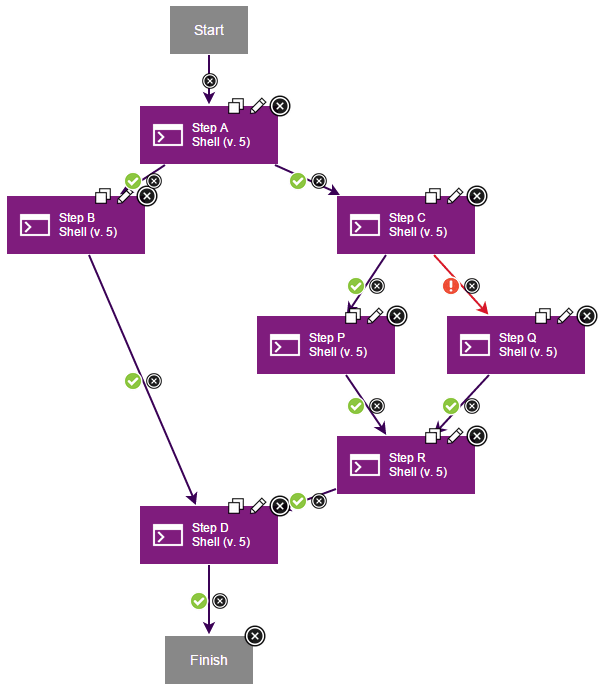
By carefully planning the location of your branching
and merging steps, you can ensure that your processes run correctly.
Branching and joining with the Switch and Join step
Use
a Join step to explicitly indicate that all connections to the Join
step must succeed. The Join step fails if any of the connections to
it fail or do not run. For example, the following process uses a Switch
step to branch the process. The Switch step has three outgoing connections,
each for a different possible value of a property. Thus, only one
of these outgoing connections runs. The three outgoing connections
are merged at a Join step. The Join step always fails because only
one of the outgoing connections runs. The two other step chains do
not run, and therefore the Join step fails.
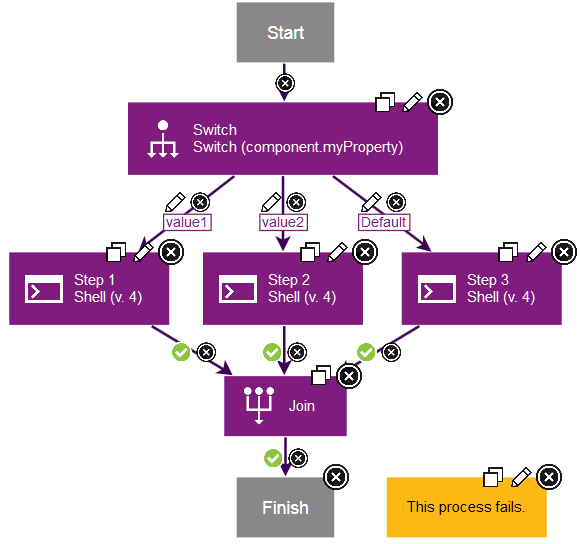
In these cases, when you
do not intend for each step chain to run, do not use a Join step.
Instead, merge the step chains by connecting the chains to a single
step, as shown in the following process.
